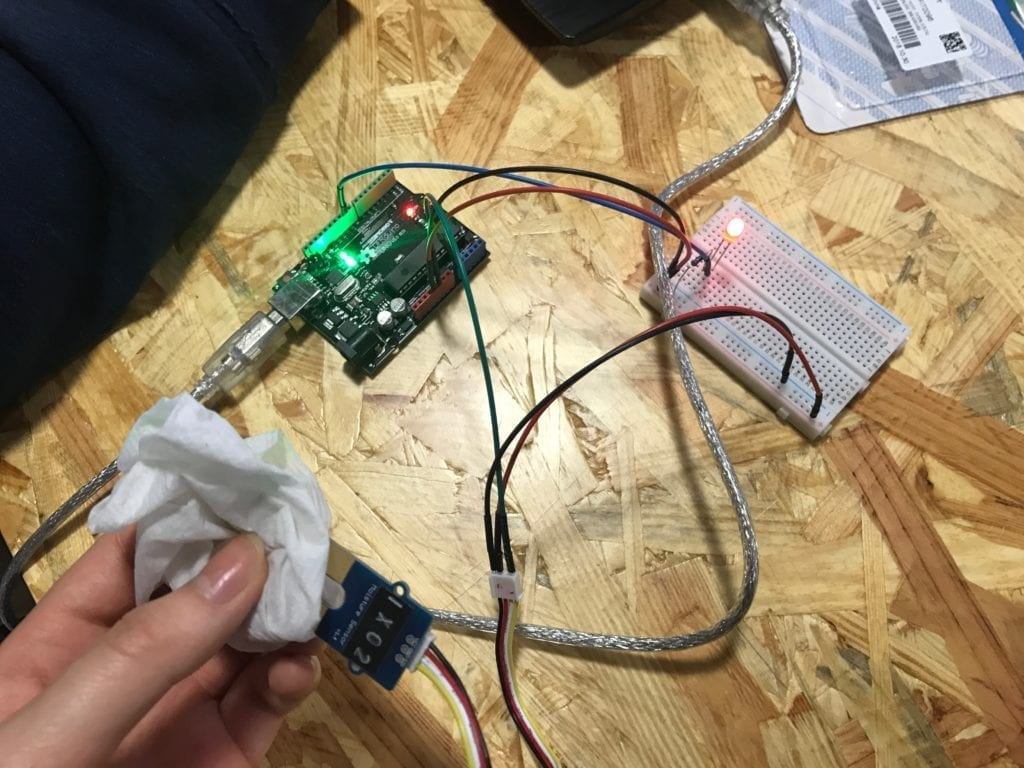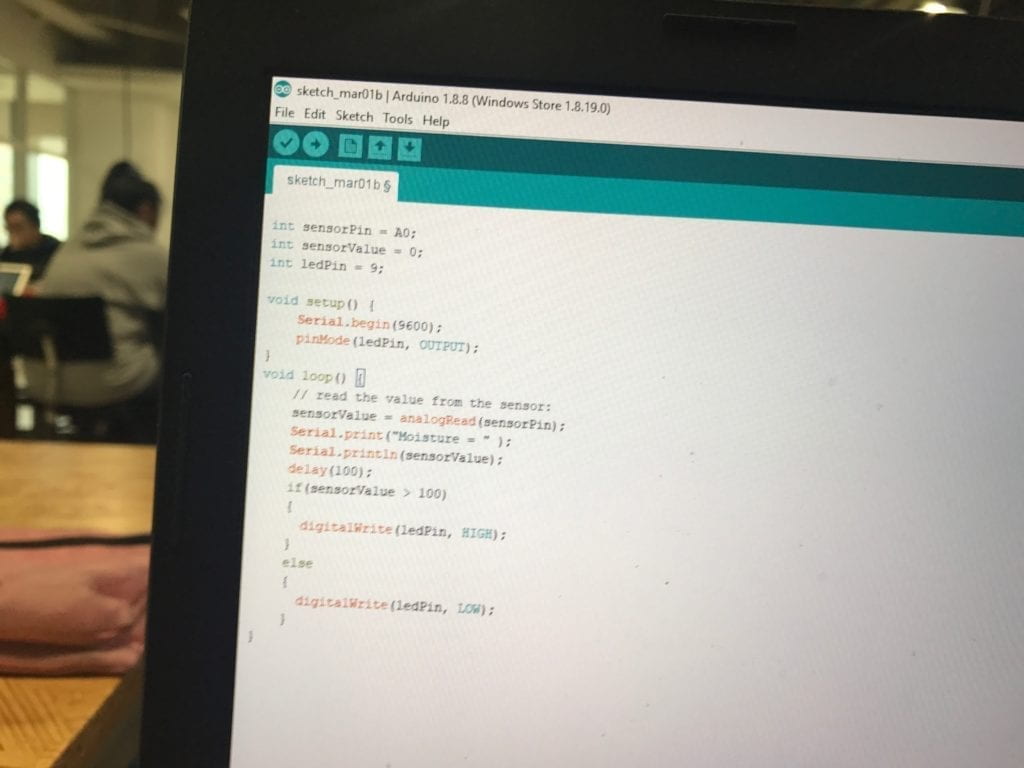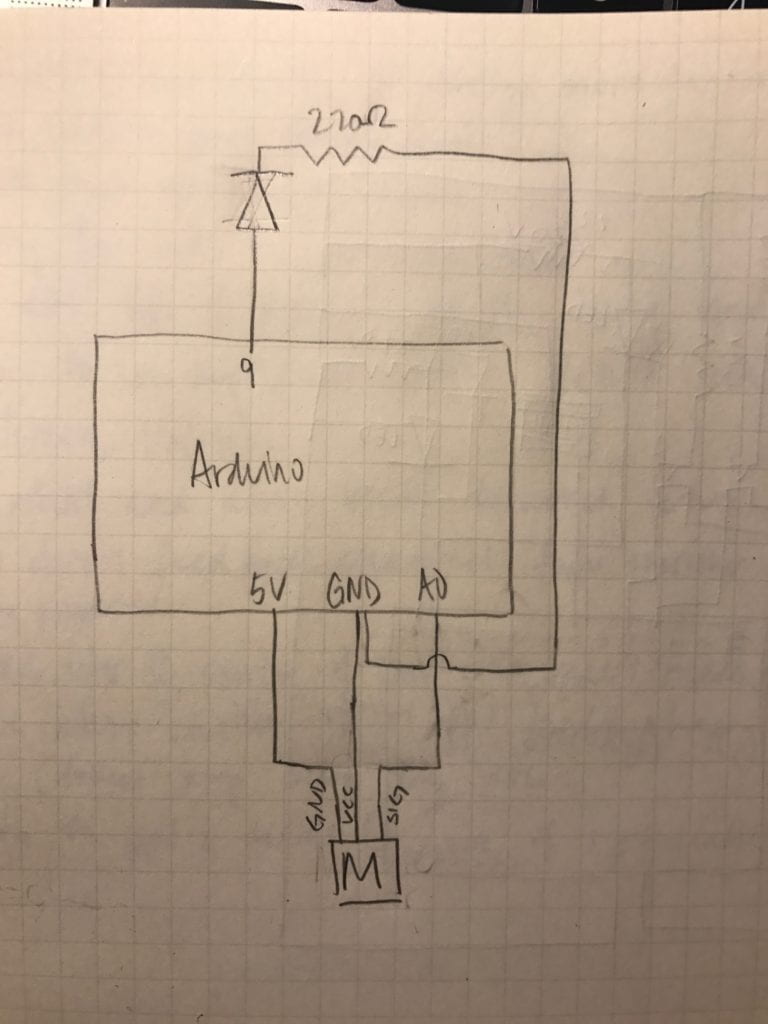In this recitation, Jonathan Lin and I chose to create a circuit using a moisture sensor. These are the components used:
1 breadboard
1 moisture sensor
1 Arduino
1 LED
1 220 ohm resistor
1 Wet napkin
Jumper cables
We decided to use the moisture sensor to trigger an LED to turn on. From the previous lecture, we knew how to connect the sensor into the breadboard and Arduino by using the cables to connect all three into power. We connected the LED and resistor into the breadboard and plugged the Arduino into Jonathan’s computer. He took code for the moisture sensor and did some adjustments to fit our circuit. At first we didn’t know exactly how to use the moisture sensor, but were shown that the sensor could pick up moisture just by holding it with our hands or applying a damp towel to the metal. The serial monitor showed that by applying moisture with different pressures, the number would fluctuate. The sensor was now connected properly, but the LED wouldn’t turn on. After a bit of fidgeting with the code and wires, we finally found out that the LED polarity was connected wrong. By switching it around, we were able to successfully use the moisture sensor to turn on the LED once the serial number went over 100.



Question 1
We assembled a circuit that would use moisture to turn on an LED. This could be used in real life in growing agriculture. Farmers or at home gardeners could use this circuit to see if their plants have enough water in the soil. They could adjust the code so that the light would turn on at certain serial numbers, for example, the light could turn on if they were over watering the plants, or if the soil didn’t have enough water. This circuit would help them gauge how much water they should be giving their plants to ensure optimal growth.
Question 2
Code is often compared to following a recipe or tutorial because there are specific steps that coders must make in order for their code to be successful. Key elements, like careful syntax and specific functions, must be included or else the code won’t run. In addition, code needs to be written in the right order for it to be read correctly. Like recipes and tutorials with ingredients and steps, there are so many different elements that coders need to be aware of in order to create successful code. Additionally, many recipes and tutorials are shared with the public, like lots of code that are easily accessible when coders upload their new creations online.
Question 3
Computers have an immense effect on our daily behaviors in our current age of technology. We have become incredible reliant on computers to do daily tasks, like researching, shopping, communicating, making art, and so on. Because of this, we are often glued to computer screens, whether we are doing work or relaxing. Our whole worlds lie within computers, so there is much less direct human interaction needed. For this reason, people have become less social and rely on hiding behind screens to communicate. People no longer spend as much time enjoying the outdoors, because they are able to find entertainment inside on their computers. This has caused a separation people’s interaction with others and the world. While there are negatives, many positives have come out of computers as well. People can easily communicate with those far from them and can share experiences through many different platforms. Computers have also given creatives a new platform to extend their art, whether through digital design or computer generated music. People also have much more access to knowledge, which has fostered people’s yearning to learn and experience new things.